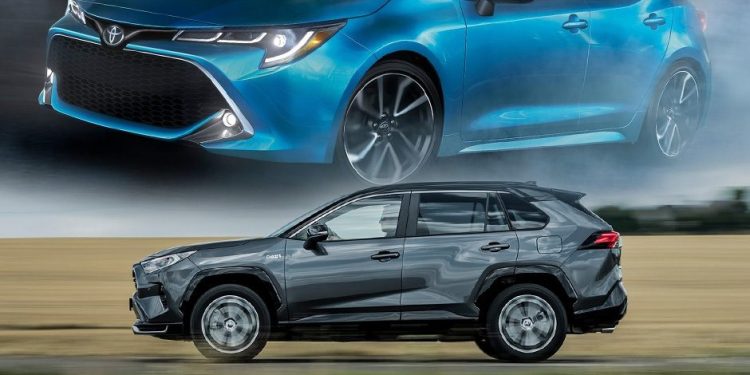Opinion: NZ’s awkward EV and hybrid ‘elephant in the room’
We’ve waxed lyrical plenty about the future of electric cars in New Zealand, in part because the country seems poised to take some kind of step of commitment towards next-gen cars, and in part because of the general enthusiasm around the electric car movement.
The latter is often propped up by domestic electric and hybrid car registration numbers, which frequently outshine the number registered over the ditch, giving rise to the idea that electrification is on the local up-and-up. The Motor Industry Association and various local pundits (myself admittedly included) have often talked about the sector as one that’s quickly growing.

But there is a slight issue with the country’s local hybrid and EV intake that appears as something of a fly in the ointment for advocates of electrification. And it appears when you look closer at local sales data.
In 2020, the MIA reports that 1533 fully electric vehicles, 757 plug-in hybrid vehicles, and 8671 hybrids were registered in New Zealand last year — a total of 10,961 electrified vehicle registrations on Kiwi soil, not including heavy vehicles or the lone newly registered hydrogen Toyota Mirai.
Although EV and PHEV figures were down on 2019, the numbers represented solid results relative to the collective decline in sales of petrol and diesel vehicles due to the impacts of Covid-19. All up, 80,849 new cars were registered in New Zealand last year, meaning that roughly one in every eight new cars was electrified in some form.
Drill into those numbers further, though, and there’s an issue for electric advocates. Out of the 10,961 hybrid and electric cars registered last year, over half of them were either a Toyota RAV4 hybrid or a Toyota Corolla hybrid.

Toyota has been reaping the rewards of its early work with the Prius. Nowadays it offers hybrids of almost every model it sells. It sold 5361 RAV4 and Corolla hybrids last year, plus 901 C-HR hybrids, 554 Yaris hybrids (in just six months on sale), 274 Yaris Cross hybrids, and 284 Camry hybrids. And a handful of Prius’, of course.
Add that all together, and it shows that 7569 of the 10,961 new electrified cars sold in New Zealand last year were Toyotas — almost 70 per cent. In other words, out of the 71 models of electrified car sold locally in 2020, 10 cars from one brand held almost three quarters of market share.
The trend has continued into 2021, too. As of the end of February, 2443 hybrids, plug-ins, and EVs had been registered in New Zealand — 1451 of which were Toyotas. Wonderful news for Toyota’s local arm, but potentially worrying news for those preparing for an electric revolution.
Some will look at this factoid and ponder whether it’s telling at all. Toyota is the country’s dominant distributor, so therefore it makes sense for them to sell many more electrified cars than anyone else, right?
Well, maybe. But if you were to look at any other segment in the Kiwi market you’ll find that none are quite as one-sided as the hybrid/EV game. Take utes, for example. Seven different ute nameplates achieved over 1000 registrations in 2020. The Ranger and Hilux went toe-to-toe all year, ending proceedings with just a five per cent market difference between the two.

The Mitsubishi Triton was somewhat all alone in third, then followed the Holden Colorado, Nissan Navara, and Mazda BT-50 — three utes that finished almost exactly on top of each other, with the D-Max not too far behind in seventh.
There’s a few reasons why people looking to get into electrified motoring are seven times more likely to buy a Toyota than anything else. The brand is synonymous with both hybrid technology and reliability, with the latter perhaps playing a greater part in the car-buying process with batteries and electric motors still relatively unproven for longevity.
Toyota’s biggest attribute, though, is price. The brand’s hybrid offerings can generally be had for barely a few grand more than their petrol counterparts. The cheapest RAV4 Hybrid (the GX) is only $7000 more than its petrol equivalent, and is itself priced relatively cheap for the mid-size SUV segment at $43,990.
Things are even tighter in the Corolla range, where a Hybrid SX hatch is only $2000 more than its petrol equivalent, and a ZR hatch is only $1300 more than its petrol equivalent.
Compare this to the price parity of other electrified models. The Volvo XC40 Recharge plug-in hybrid is $84,900; $12,000 more than the petrol T5 R-Design AWD flagship. A Mitsubishi Outlander PHEV VRX is $58,990 — 10 grand more than a 4WD petrol VRX.
Priced at $89,990 Peugeot’s new arrival 3008 Hybrid4 is over $30,000 more expensive than its petrol and diesel cousins. The funky Mini Cooper SE EV is $59,900, or about $10,000 more than a Cooper S, and almost $20,000 more than an ordinary Cooper.

One distributor recently told an NZ Autocar staffer that Toyota’s advantage in the hybrid space race is down to the fact that hybrid versions of popular models are usually just a few grand more than standard models. They’d love to do the same, but can’t because of local pricing being set overseas. This is probably the story for a bunch of Kiwi distributors who wish they could take a bite out of Toyota’s hybrid onslaught.
The market will eventually correct this. Just recently MG revealed local pricing for its plug-in hybrid HS — set at $7000 more than the standard model. More will follow as the world gets used to a hierarchy where electrified vehicles are the mainstream and pure ICE vehicles are the exotic outlier. But one wonders whether high prices have painted all of Toyota’s core opponents into a corner for years to come.





